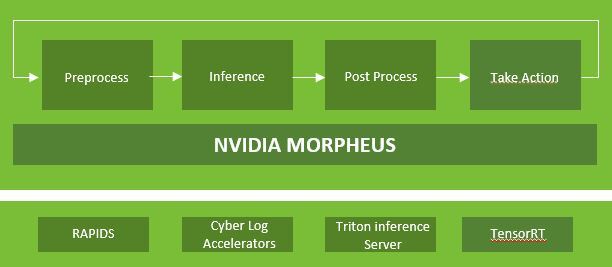 This post discusses infrastructure factors to consider, such as performance, hardware, and types of AI software for implementing a fraud prevention strategy.
This post discusses infrastructure factors to consider, such as performance, hardware, and types of AI software for implementing a fraud prevention strategy.
Any business or industry, from retail and healthcare to financial services, is subject to fraud. The cost of fraud can be staggering. Every $1 of fraud loss costs financial firms about $4 to mitigate. Online sellers will lose $130B to online payment fraud between 2018 and 2023.
By using AI and big data analytics, enterprises can efficiently prevent fraud attempts in real time.
This post discusses the infrastructure factors to consider, such as performance, hardware, and types of AI software for implementing a fraud prevention strategy.
Pre– and post-transaction fraud detection
Before discussing fraud detection, let’s be clear on the difference between prevention and detection. Fraud prevention describes the overall effort to manage and eliminate fraud. Fraud detection is simply the ability to identify fraudulent activity.
There are two approaches to fraud detection, both necessary for a comprehensive fraud prevention strategy.
- Pre-transaction detection: Detecting and blocking attempted fraud transactions before transaction completion. When anomalous data or behavior is detected before a transaction, the transaction is blocked.
- Post-transaction detection: A fraudulent transaction is identified after transaction completion based on data analysis or post-transaction inputs. This is followed by damage mitigation.
The ideal approach is to detect and block attempted fraud before its occurrence. When fraud is detected after a transaction, the only recourse is to assess the damage, notify relevant parties, and work to recover from the fraud damage.
Although fraud can never fully be eliminated, both pre– and post-transaction fraud efforts are important in developing a fraud risk management plan.
Best enterprise IT practices for developing an effective anti-fraud solution
If fraud prevention was as simple as instant breakfast cereal, you’d just add hot water and stir. A standard server and software is all that’s needed for effective fraud prevention. Correct? Not exactly.
Fraud prevention software is obviously essential, but choosing just any hardware and software combination does not ensure success. In spite of widespread fraud prevention “solutions” across enterprises, fraud continues to increase, causing financial damage in the process.
Enterprise IT must ensure that multiple infrastructure elements are in place:
- AI-driven software: There is a trend toward AI-driven fraud solutions because traditional static intelligence is not as effective as the dynamic intelligence of AI. To prevent sophisticated fraud attempts, software must learn. Thus, AI must be at the core.
- Accelerated performance: Real-time AI-driven fraud detection requires the highest performance possible. Delays can impact customer experience. With performance, more fraud factors can be evaluated in real time, resulting in more accurate fraud detection.
- Availability and scale: A highly available scale-out architecture is required to support 24-7 data ingest and prevention.
Without these three components, you can expect less efficiency, which can result in greater fraud loss for businesses and customers.
AI-driven software
AI-driven software is already pervasive in the enterprise. Through AI-trained fraud prevention models, the accuracy of detecting real fraud can be evaluated and tuned based on model training iteration. After training, the prevention solution runs as an inferencing application to evaluate and block potentially fraudulent transactions. Data from the application is then fed back to the model for re-training and greater accuracy and efficiency. The continuously retrained model is then used to update the production application and so on.
As machine learning (ML) and deep learning (DL) are increasingly applied to growing datasets, Apache Spark has become popular for data preprocessing and feature engineering as raw data is prepared for training. It is also used as a data execution engine for analytics workloads. GPUs parallelize and accelerate data processing queries in the same way they accelerate deep-learning and AI workloads. RAPIDS is commonly used to accelerate Spark as well as ML/DL frameworks within a GPU-accelerated infrastructure.
In addition, AI frameworks like NVIDIA Morpheus can run in an unsupervised manner to flag anomalous activity and enhance fraud prevention efforts. AI-based fraud prevention is dynamic and can automatically adapt to threats.
Accelerated performance
Yes, there is a need for speed, especially for pre-transaction fraud detection.
Pre-transaction detection
Without hardware acceleration, customers executing transactions can be inconvenienced with unacceptable delays as fraud prevention software analyzes each transaction. Slow processing impacts customer satisfaction and merchants realize less revenue. Standard CPUs were sufficient for legacy fraud prevention, but no longer.
Modern AI-based solutions powered by enterprise-class GPUs can be an order of magnitude more effective in speed and accuracy. High-performance GPU acceleration can enable the evaluation of more risk factors in a given time frame. Alternatively, the same number of risk factors can be evaluated in less time.
Post-transaction detection
Post-transaction fraud detection is not bound by real-time constraints. Still, GPU acceleration can provide benefits. Faster processing power allows for more data to be evaluated within a given period of time.
As with pre-transaction results, post-transaction results can be used to update pre– and post-processing models to improve future results (inferencing).
Other performance considerations
IT departments may mistakenly evaluate server performance requirements solely based on transaction speed. However, high performance is also required for initial model training and retraining based on incoming feedback data from the inference application.
Without GPU acceleration, initial training can take hours or days, and retraining can be unacceptably long. Time-to-results is not just about GPU clock rate. Some GPUs are not certified as enterprise-class and lack substantial GPU memory or a sufficient number of cores to deliver fast training results.
Yes, training of large fraud prevention models can be executed in the cloud with both performance and scale. Unfortunately, cloud processing cycles can be expensive after multiple training iterations.
Fortunately, model training can be cost-effectively executed locally in an iterative manner on enterprise GPU-accelerated workstations using a representative subset of data or with lower-resolution accuracy parameters. This makes the cost of preliminary model training essentially free after the capital expense of data science workstations or GPU-enabled servers.
After preliminary training, full-scale training in the cloud or enterprise server or server cluster can be executed on a large data set with greater efficiency.
Availability and scale
Fraudsters never sleep, so enterprise fraud prevention also cannot rest. Transactional apps run non-stop, so fraud prevention software must do the same. Enterprise IT infrastructure must deliver resiliency and availability for the prevention solution. As I’ve noted, performance is important, but when it’s not always available, it negates any performance benefits.
As I discussed earlier, fraud and associated damage are increasing each year. Prevention solutions must seamlessly scale out to accommodate this.
Availability and scalability requirements cannot be limited to servers. For example, a network may meet the specs for required throughput and latency, but the reality is that burst network traffic may cause sufficient network congestion such that fraud detection is either skipped, unacceptably delayed, or timed out. For this reason, network robustness and redundancy can’t be ignored when building an advanced anti-fraud solution.
Building AI-friendly infrastructure for fraud solutions
Will your AI-driven solution receive the performance, availability, and scale that is needed for success over time? Assuming the right AI-based fraud prevention software, IT must also ensure the right infrastructure. As I discussed earlier, this means infrastructure for accelerated performance, non-stop operation, and the flexibility to scale out seamlessly the infrastructure investment as fraud prevention data and workloads increase over time.
It is also challenging to deliver enterprise-class IT infrastructure that supports both fraud prevention and AI-driven enterprise solutions. The right mix of products addresses the performance, availability, and scale-out requirements for enterprise fraud prevention while supporting other AI frameworks and tools. This can range from mobile and desktop workstations for model development to servers and software for data center inference and training at scale.
For more information about fraud detection and prevention for demanding enterprise AI environments, see Fraud Detection – Top Resources from GTC 21.

